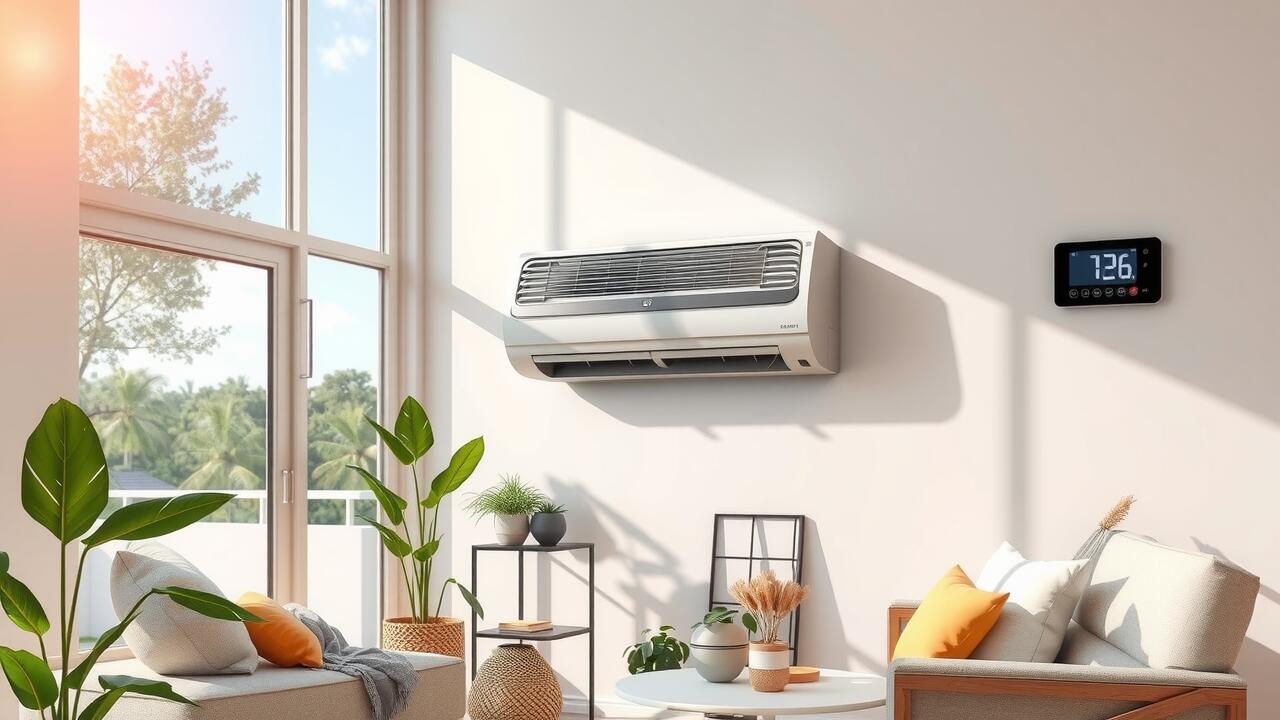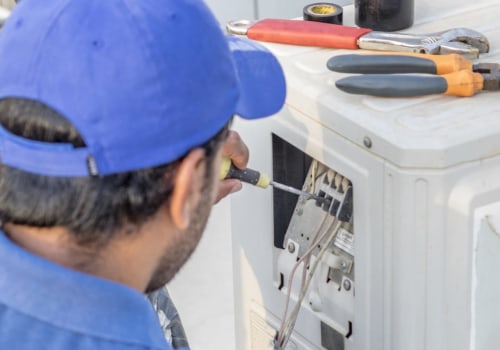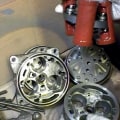Key Takeaways
- Progression of Cooling Systems
- Significant Achievements in Temperature Control
- Notable Historical Advancements in Cooling Technology
- Shift to Contemporary Cooling Solutions
Evolution of Air Conditioning
The history of air conditioning is marked by significant innovations and adaptations that have shaped modern climate control. Early innovations set the stage for the advent of air conditioning, leading to the invention of air conditioning units designed to enhance comfort. The development of central air conditioning systems revolutionized how spaces were cooled and heated, transitioning from window units to more integrated approaches. Historical developments in air conditioning technology also led to the introduction of portable air conditioning options, catering to various needs and environments. As air-conditioning systems evolved, concerns about the environmental impact of air conditioning became increasingly prominent, prompting advancements in energy efficiency across air conditioning equipment. These strides emphasized the ongoing balance between comfort and sustainability in the heating and air conditioning industry.
- The first mechanical air conditioning system was invented by Willis Haviland Carrier in 1902.
- The 1920s saw the introduction of air conditioning in theaters, enhancing the movie-going experience.
- Central air conditioning systems gained popularity in the post-World War II housing boom, transforming residential comfort.
- The 1970s energy crisis led to stricter regulations and a focus on energy-efficient air conditioning solutions.
- Innovations in refrigerants, such as the move away from chlorofluorocarbons (CFCs), aimed to reduce ozone depleting effects.
- Smart air conditioning systems now use IoT technology for improved efficiency and remote control capabilities.
- The increasing demand for eco-friendly systems has spurred the development of solar-powered air conditioning options.
Early Innovations in Climate Control
The quest for climate control can be traced back to ancient civilizations that utilized passive air conditioning methods. These early techniques involved strategic design elements like thick walls, high ceilings, and shaded courtyards to naturally regulate indoor temperatures. Historical developments in air conditioning technology began to emerge as societies recognized the importance of heating, ventilation, and air conditioning (HVAC) for comfort. The American Society of Heating, Refrigerating, and Air-Conditioning Engineers played a crucial role in laying the groundwork for modern systems, which eventually evolved to include more advanced air conditioning solutions.
By the early 20th century, innovations such as mechanical refrigeration began transforming the landscape of climate control. The introduction of inverter air conditioning units marked a significant advancement, enabling more efficient energy use while providing precise temperature regulation. As the heating and refrigeration institute grew in prominence, so did the need for air conditioning solutions. These developments paved the way for systems that not only enhanced air cooling but also improved overall indoor air quality, setting the stage for modern air conditioned spaces.
The Role of Refrigeration in Air Conditioning
Refrigeration has played a pivotal role in the evolution of air conditioning systems, significantly improving indoor air quality. Historical developments in air conditioning technology highlight the transition from basic cooling solutions to sophisticated air conditioning units. The introduction of air compressors and refrigerants allowed for greater efficiency and effectiveness. Central air conditioners and portable air conditioners utilize these advancements to enhance airflow and maintain comfortable indoor temperatures, thereby elevating the comfort level in both residential and commercial spaces.
The impact of refrigeration technology extends beyond standard air conditioning units. Automobile air conditioners, for instance, transformed driving experiences by providing a cool, comfortable environment. Air source heat pumps also emerged from refrigeration innovations, offering an eco-friendly approach to heating and cooling. The integration of air purifiers with air conditioning systems further elevates indoor air quality, ensuring that occupants breathe cleaner air. As air conditioning technology continues to evolve, the historical role of refrigeration remains foundational in shaping modern solutions for climate control.
Milestones in Air Conditioning Systems
Significant milestones in air conditioning systems have marked the journey of historical developments in air conditioning technology. The introduction of mechanical refrigeration laid the groundwork for modern air-conditioning technology, allowing for more efficient methods of cooling indoor spaces. Alongside this, the advent of air-source heat pumps revolutionized energy use by facilitating both heating and cooling through innovative air flow techniques. The invention of the first air conditioning unit brought about an essential shift in comfort control, leading to the integration of air cleaners and air ducts that enhanced air purification in homes and businesses. These advancements solidified the foundation of the air-conditioning industry, establishing the standards for air-conditioning equipment and techniques used today.

Introduction of Mechanical Refrigeration
The introduction of mechanical refrigeration marked a pivotal point in Historical Developments in Air Conditioning Technology. This technology enabled the creation of efficient air-conditioning systems that transformed how indoor climates were managed. Early electric air conditioning apparatus utilized mechanical processes to cool air, allowing for improved air conditioning efficiency compared to previous methods. As these innovations emerged, air conditioning use expanded beyond industrial applications into residential and commercial settings, leading to extensive air conditioning installations across the globe.
Mechanical air conditioning systems required skilled air-conditioning engineers who could design and implement these mechanical refrigeration units effectively. The evolution of this technology also paved the way for centralized air conditioning, which offered a more comprehensive solution for cooling larger spaces. The advent of electric air conditioning further revolutionized the industry, making air conditioning found in homes and businesses more accessible. This shift not only enhanced comfort but also laid the groundwork for advancements in international air-conditioning standards and practices.
The Invention of the First Air Conditioning Unit
The first modern air conditioning system was invented by Willis Carrier in 1902, marking a pivotal moment in the historical developments in air conditioning technology. His innovative high-pressure air-conditioning system transformed how conditioned air could be manipulated to create an air-conditioned room, leading to significant advancements in domestic air conditioning. Carrier's design addressed the need for energy-efficient air conditioning, allowing businesses to enjoy year-round air conditioning without compromising on efficiency. This breakthrough laid the groundwork for the technology air conditioners we utilize today.
Carrier's invention revolutionized the concept of modern air and paved the way for future innovations in overall air conditioning systems. His design not only improved comfort in homes but also influenced various industries such as manufacturing, where maintaining optimal temperatures is crucial. The introduction of air conditioning filters further enhanced indoor air quality, making air-conditioned autos and other environments more pleasant. The legacy of Carrier's work continues to resonate through the modern air conditioning landscape, emphasizing the importance of sustainable and efficient systems in contemporary living.
Key Historical Developments in Air Conditioning Technology
The Historical Developments in Air Conditioning Technology have significantly transformed how we experience comfortable living and working environments. Early mechanical air systems paved the way for innovative air solutions, leading to the introduction of air conditioner equipment that drastically improved indoor climates. The concept of an air-conditioned house became highly desirable, evolving from traditional air conditioners to modern air-cooling systems tailored for efficiency. Breakthroughs in electrical air technology during the mid-20th century allowed for new air conditioners to be more accessible and affordable, promoting the widespread use of air-conditioned homes and schools. As air conditioning design adapted to meet the demands of the day, the introduction of the air-to-air type systems marked a pivotal moment in the quest for effective air heating and cooling. Future air developments promise even more advancements, as air conditioner manufacturers continue to innovate and refine their products.

Advancements in Energy Efficiency
The 19th century saw significant advancements in HVAC technology, particularly in energy efficiency. Historical developments in air conditioning technology highlighted the transition from basic systems to more efficient models. Central air systems began incorporating insulation and better airflow management, allowing for optimal internal air circulation and minimizing the loss of conditioned air. This approach reduced the need for constant air changes, which preserved energy while maintaining desired air temperature levels.
The evolution of the mechanical air conditioner marked a turning point in energy conservation. The first air conditioner was designed to maintain optimal humidity and temperature, while later innovations led to the ubiquitous air conditioner found in homes and businesses today. The introduction of air source heat pumps and cold air machines offered additional energy-efficient options that effectively met fresh air requirements. As a result, modern systems not only cool spaces but also enhance indoor air quality with the integration of fresh air from the outside.
The Impact of World War II on Air Conditioning Design
World War II prompted significant changes in air conditioning design, leading to notable Historical Developments in Air Conditioning Technology. The military's need for efficient cooling systems in aircraft and barracks accelerated advancements in air-cycle refrigeration. This innovation allowed for the effective circulation of cool air, utilizing an air duct system to manage exterior and temporary indoor air efficiently. The development of an air conditioner unit became critical for maintaining a comfortable environment for troops, displaying the importance of increased air condition in challenging climates.
The post-war period saw the transition of air conditioners into civilian markets, driven by advancements made during the conflict. The introduction of advanced air-cycle refrigerating systems permitted more effective air supply, integrating with hvac/r technology programs designed for residential and commercial use. This era emphasized the need for systems that could efficiently process outside air while delivering cool air indoors, ensuring a balance between comfort and energy consumption. Historical Developments in Air Conditioning Technology during this time set the foundation for modern air-conditioning designs.
Transition to Modern Air Conditioning
The evolution of air conditioning technology has seen significant advancements that have transformed how we manage indoor climates. Early on, the invention of the first air conditioning unit by Carrier laid the groundwork for what would become a staple in modern homes. The introduction of in-window air conditioners and portable air units made cool air accessible to many households. These systems utilized innovative cool air ducts to maintain ideal ambient air temperatures. HVAC innovation continued with the development of electronic air cleaners that improved indoor air quality alongside good airflow. As air-conditioned villages emerged, technologies expanded to include air-conditioned beds and warm air furnaces, reflecting the ongoing pursuit to enhance comfort. The historical developments in air conditioning technology have shaped today's diverse options, from traditional window air conditioners to sophisticated central systems designed for optimal efficiency.
| Year | Innovation | Technology Highlights |
|---|---|---|
| 1902 | First Air Conditioning Unit | Invention by Willis Haviland Carrier |
| 1950s | Window Air Conditioners | Democratization of air conditioning; accessible to households |
| 1970s | Electronic Air Cleaners | Improvement in indoor air quality; integration with HVAC systems |
| 1990s | Air Conditioner Innovations | Introduction of energy-efficient systems and smart technologies |
| 2020s | Central Air Conditioning Systems | Focus on optimal efficiency and environmental sustainability |
Development of Central Air Conditioning Systems
The evolution of central air conditioning systems can be traced back to significant Historical Developments in Air Conditioning Technology. The introduction of large-scale air conditioners revolutionized how we achieve comfort in commercial spaces and residential homes. Central air systems replaced older methods of cooling such as air coolers that were less efficient. Innovations like the terminal air conditioner provided flexibility in distributing chilled air throughout buildings, ensuring that every passenger compartment air was maintained at a comfortable temperature.
These advancements also paved the way for the integration of air purification systems, enhancing indoor air quality. Air furnaces often worked in conjunction with central air to optimize energy use, transforming energy-intensive air handling into a more efficient process. The creation of devices like the air thermoscope and air thermometer allowed for precise measurement of temperatures, allowing users to differentiate between low air, regular air, and chilled air. Such developments have significantly shaped the cooling industry, making central air a staple in modern climate control.
Innovations in Smart Air Conditioning Technology
Smart air conditioning technology integrates advanced systems to optimize energy efficiency and user comfort. Gone are the days of primitive cooling systems; modern HVAC solutions employ passive cooling technology and heat pump air systems to enhance performance. This innovation allows for greater control over indoor climates, balancing the need for cool, dry air in residential settings with energy-saving measures. Historical developments in air conditioning technology have paved the way for these advancements, including packaged air conditioners that cater to both residential and commercial needs.
The introduction of semi-portable air options has broadened the accessibility of effective cooling solutions. Year-round auto air features in smart units automatically adjust temperature settings based on external conditions, significantly improving user experience. These systems can utilize air separation techniques to efficiently manage hot air and dry air exchanges. Fun HVAC facts reveal that such developments not only enhance comfort but also contribute to a more sustainable future for the HVAC industry, making air conditioner adoption an intelligent investment for households.
Conclusion
The journey of air conditioning began with significant Historical Developments in Air Conditioning Technology that transformed how we approach climate control. The introduction of the first window air conditioner marked a pivotal moment, allowing individuals to enjoy a cooling breeze in their homes effortlessly. Early innovations relied on the vapor-refrigerating system, which laid the groundwork for modern HVAC practices. The advent of room-size air conditioners and unitary air conditioners provided consumers with more options for a well-designed cooling system, focusing on energy efficiency and convenience. As our understanding of the need for outdoor air circulation improved, the evolution led to sophisticated domestic air solutions that ensure a steady flow of cold air, evolving the concept of artificial cooling into an essential component of modern living.
FAQS
How did the invention of air conditioning by Willis Carrier in 1902 influence modern air conditioning technologies and systems?
The invention of air conditioning by Willis Carrier in 1902 was a pivotal moment in heating, ventilation, and air-conditioning history. It laid the foundation for modern air conditioning systems, including air-cooled and mechanical air-conditioning techniques. This innovation significantly improved air-conditioning efficiency and led to the development of various cooling equipment such as room air conditioners, packaged air conditioners, and even commercial air options like inbuilt air conditioning systems. As a result, air conditioning has evolved to enhance comfort in both residential air settings and air-conditioned schools, establishing itself as an essential component of modern life.
What are some key innovations in air conditioning technology since its invention by Willis Carrier in 1902, and how have they transformed heating, ventilation, and air-conditioning systems?
Since the invention by Willis Carrier in 1902, air conditioning has undergone remarkable innovations that have significantly transformed modern air conditioning systems. Key advancements include the development of air-cycle refrigerating machines and packaged air conditioners, which improve efficiency in cooling stations. Additionally, the introduction of air cooled systems has allowed for better ventilation of warm air, contributing to effective heating and refrigeration. The evolution of mechanical air conditioners and the focus on external air sources have further refined HVAC engineering, making air conditioning more accessible and adaptable to various environments. These modern air conditioning technologies demonstrate the significant transition in the industry and the ongoing influence of Carrier's pioneering work.
How has the evolution of air conditioning technology impacted the standards and practices set by the heating and refrigeration institute, particularly in relation to modern air conditioning systems?
The evolution of air conditioning technology, particularly since it was invented by Willis Carrier in 1902, has significantly influenced the standards established by the heating and refrigeration institute. Innovations in air conditioning, such as the development of modern air conditioners and advanced heating, ventilation, and air-conditioning (HVAC) systems, have transformed how we understand and implement air conditioning today. This includes improvements like packaged air conditioners, efficient warm air heating solutions, and sophisticated mechanical air conditioners that optimize energy usage and environmental impact, thereby enhancing the efficiency of air cycle and outdoor air systems.
How has the introduction of air conditioning systems pioneered by Willis Carrier in 1902 contributed to advancements in modern air conditioning technology?
The invention of air conditioning by Willis Carrier in 1902 laid the groundwork for the evolution of air conditioners, drastically altering heating, ventilation, and air-conditioning standards. This innovation led to the establishment of the heating and refrigeration institute, which has been pivotal in the development of modern air conditioning systems and practices. Over the years, advancements in air-conditioning technology have made it possible to improve energy efficiency and air quality, transitioning from the first HVAC engineering concepts to more sophisticated mechanical 'air conditioners' used today.
How did the role of the heating and refrigeration institute evolve with the introduction of modern air conditioning systems that were invented by Willis Carrier in 1902?
The role of the heating and refrigeration institute has significantly evolved alongside modern air conditioning developments since the invention of air conditioning by Willis Carrier in 1902. As air-conditioning technology advanced, it contributed to improved heating, ventilation, and air-conditioning practices. This evolution paved the way for the establishment of new standards in air conditioning systems, ensuring efficiency and comfort in the operation of various air conditioning units, including packaged air conditioners and pump air conditioners. Today, the institute continues to promote best practices and innovations in the air conditioning field, including the transition of air conditioners towards more sustainable technologies.
What lessons can we learn from the historical developments in air conditioning technology, particularly regarding its influence on modern air conditioning systems today?
The historical developments in air conditioning technology, especially innovations invented by Willis Carrier in 1902, have fundamentally shaped the design and implementation of modern air conditioning systems. As we learn about air conditioning, it becomes clear how those early inventions influenced the effectiveness of heating, ventilation, and air-conditioning systems. The advancements made over the years, including more efficient air conditioners and packed air conditioners, demonstrate significant transitions in technology that have also been recognized and adapted by the heating and refrigeration institute. Understanding these changes helps us appreciate the sophisticated air-conditioning systems we use today.
How have the advancements in air conditioning technology since it was invented by Willis Carrier in 1902 shaped modern air conditioning systems and influenced the practices of the heating and refrigeration institute?
The groundbreaking invention of air conditioning by Willis Carrier in 1902 marked the beginning of a significant transformation in temperature control. Since then, advancements in air conditioning technology have led to the development of more efficient and versatile air conditioning systems. These modern air conditioning solutions are not only focused on cooling but also integrate heating, ventilation, and air-conditioning (HVAC) systems to create comfortable indoor environments. Additionally, the heating and refrigeration institute has adapted its standards to support the innovation in air conditioners, ensuring that new technologies like variable refrigerant flow systems, energy-efficient packaged air conditioners, and improved control systems meet the growing demand for sustainable and effective climate control. As a result, we see an evolution in how air conditioning learns from historical developments while addressing warmer air challenges in today's buildings.
How have significant advancements in the design and efficiency of air conditioning systems since their inception changed the practices of the heating and refrigeration institute?
Significant advancements in air conditioning technology, particularly since they were invented by Willis Carrier in 1902, have greatly influenced modern air conditioning systems. These improvements have led to new standards and practices by the heating and refrigeration institute, affecting heating, ventilation, and air-conditioning systems. For example, modern air conditioners now incorporate energy-efficient designs that enhance system air quality and optimize exterior air input.
What are some notable advancements in air conditioning systems since they were invented by Willis Carrier in 1902, and how have these changes influenced the heating and refrigeration institute?
Since the invention of air conditioning by Willis Carrier in 1902, there have been numerous advancements in air conditioning technology. These innovations include the development of energy-efficient air conditioners, the introduction of advanced heating, ventilation, and air-conditioning systems, and the use of smart technology for better climate control. These changes have significantly influenced the standards and practices set by the heating and refrigeration institute, as they now focus on improving air quality, efficiency, and sustainability in modern air conditioning systems. The integration of innovations like packaged air conditioners and the air-conditioning torch has also transformed how air conditioners operate, resulting in a transition towards more environmentally-friendly solutions.
What impact did the advancements in air conditioning technology have on the evolution of air conditioners and the practices of the heating and refrigeration institute?
The advancements in air conditioning technology since it was invented by Willis Carrier in 1902 have significantly shaped modern air conditioning systems. These improvements in design, efficiency, and functionality have influenced the heating, ventilation, and air-conditioning sectors, leading to better performance and energy efficiency in air conditioners. The heating and refrigeration institute has adapted its standards and practices in response to these innovations, ensuring that air-conditioning systems meet contemporary demands for sustainability and effective climate control.











